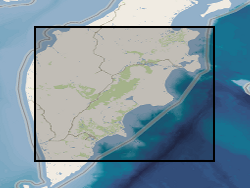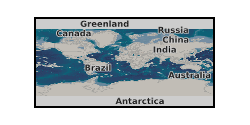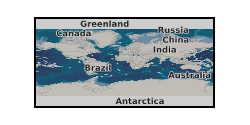Boron isotopes
Type of resources
Topics
Keywords
Contact for the resource
Provided by
Years
Formats
Representation types
Update frequencies
-

This dataset contains bulk rock, glass, melt inclusion and host phenocryst geochemical compositions for materials from Tolbachik volcanic field, Kamchatka, Russia, together with supporting petrographic information. Sampling localities are provided together with the bulk rock compositional data. Samples were acquired between 2016 and 2019 and the data were collected between 2016 and 2020 using secondary electron microscopy, electron microprobe analysis, secondary ion mass spectrometry, laser ablation ICP-MS, X-ray fluorescence and solution ICP-MS, and multi-collector ICP-MS methods. Most of the data are included in a manuscript (Iveson et al.) to be submitted to Journal of Petrology in March 2022.
-

Late (0-250 ka) and middle (1050-1280 ka) Pleistocene boron isotope data from planktic foraminifera (Globigerinoides ruber) and oxygen isotopes data from benthic formainifera (Cibicidoides wuellerstorfi). Boron isotopes measured using multi-collector inductively coupled plasma mass-spectrometry (MC-ICPMS).
-

Boron isotope and trace metal measurements of fibrous aragonite in modern deep-sea coral Desmophyllum dianthus and associated CDIAC (Carbon Dioxide Information Analysis Center) hydrographic data. Atlantic Ocean, Pacific Ocean, Southern Ocean
-

Global warming during the Palaeocene-Eocene Thermal Maximum (PETM, ~56 Ma) is commonly interpreted as being driven by massive destabilization of carbon from surficial sedimentary reservoirs. If correct, this has important implications for the amplification of future fossil fuel emissions via carbon-climate feedbacks. In our study we provided new paired records of boron and carbon isotope changes in the ocean that questions this long-held interpretation. Our data are implemented in an Earth system model to reconstruct the unfolding carbon cycle dynamics across the event. Strong evidence for a larger (>10,000 PgC) and on average isotopically heavier (> -17‰) carbon source leads us to identify volcanism associated with the North Atlantic Igneous Province as the main driver of the PETM. We also find that although organic carbon feedbacks with climate played a more minor role in driving the event than previously thought, organic matter burial was important in ultimately sequestering this carbon and driving the recovery of the system. Data presented in this data set comprise geochemical elemental, as well as boron, carbon and oxygen isotopic data from surface dwelling foraminifera Morozovella Subbotina. Alongside the boron isotopic data we also provide reconstructed surface water pH with corresponding uncertainties for our preferred pH reconstruction.
-

Seawater carbonate system properties and atmospheric carbon dioxide concentration reconstructions from Eocene planktonic foraminifera using boron isotope analyses.
-

Elemental and stable isotope data measured in Eocene foraminiferal calcite from Ocean Drilling Program Site 865 and Tanzanian Drilling Project Site 18 published in Edgar et al. (2015) "Assessing the impact of diagenesis on δ11B, δ13C, δ18O, Sr/Ca and B/Ca values in fossil planktic foraminiferal calcite" in Geochimica et Cosmochimica Acta, v. 166, p. 189-209. Table 1. δ18O and δ13C values for glassy and frosty foraminifera from TDP Site 18 and ODP Site 865, respectively. Table 2. Sr/Ca and B/Ca values, and test weights for glassy and frosty foraminifera from TDP Site 18 and ODP Site 865, respectively. Table 3. δ11B values for glassy and frosty foraminifera from TDP Site 18 and ODP Site 865, respectively.
 NERC Data Catalogue Service
NERC Data Catalogue Service